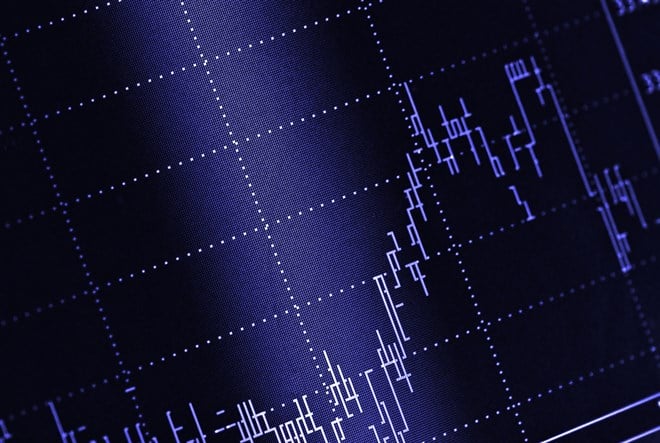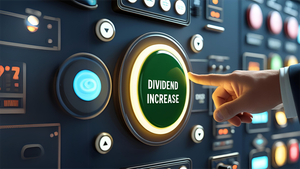
This premier small-cap index offers risks and rewards for investors who are comfortable with volatility.
The Russell 2000 Index tracks the 2,000 smallest stocks out of the 3,000 stocks in the Russell 3000 Index. The index makes up about 10% of the entire market capitalization of the Russell 3000. The Russell 2000 is managed by the FTSE Russell Group in London. Its focus on small-cap, U.S. stocks makes it one of the bellwethers of the U.S. economy and the broader market. Every stock in the index must trade on a major stock exchange (i.e., the NYSE, NASDAQ, or AMEX).
This article will go into detail about the Russell 2000, including how it removes some risk from investing in small-cap stocks. We’ll also go over some options for investors looking to trade the Russell 2000 stocks.
A Balanced Approach to Investing in Small-Cap Stocks
The Russell 2000 is a small cap index because the stocks it tracks have stocks that fit the small-cap market capitalization definition. Small-cap stocks are generally companies with a market capitalization of less than $2 billion dollars. When they are compared to large- and mid-cap companies, small-cap stocks are typically seen as having better growth potential.
By nature, small-cap stocks are subject to volatile price swings that make them appropriate only for risk-tolerant investors. One such risk is that many small-cap companies are newer entries into their field. And depending on where they are in their business cycle, they may require access to a lot of capital which can be hard to acquire.
Why is the Russell 2000 Index Significant?
The first index fund debuted in 1960. As of July 2022, there are more than 1,700 index funds. And that number is up from just over 400 in 2003. With so many index funds to choose from, it’s important to understand what makes one index fund stand out from another.
The Russell 2000 is a relatively old fund. It launched in 1984 and was one of the first index funds to specifically focus on small-cap stocks. Before we explain why that is significant, it’s important to understand how the Russell 2000 relates to its “parent index,” the Russell 3000.
The Russell 3000 index is a benchmark index of the entire U.S. stock market. As its name suggests, the index measures the performance of the 3,000 largest publicly held companies in the United States and represents approximately 97% of the entire U.S. public equity market. The Russell 3000 is weighted by market capitalization. Like the Russell 2000, the Russell 3000 debuted in 1984.
The objective of the Russell 2000 is to measure the performance of the 2,000 smallest companies in the Russell 3000. As of the first quarter of 2022, the average value for a company in the index was $3.17 billion, and the median market cap was $0.93 billion. The index is the most widely quoted measure of the overall performance of small- to mid-cap stocks.
In addition to the Russell 2000, there are two sub-indexes that are fine-tuned to track special characteristics that are sought after by investors. For example, the Russell 2000 Growth Index measures the performance of Russell 2000 companies with higher price-to-value ratios and projected higher growth values. Conversely, the Russell 2000 Value Index measures the performance of companies in the index with low price-to-book (P/B) ratios and is projected to have lower growth values.
How is the Russell 2000 Index Different from Other Major Indices?
- A focus on smaller, more volatile companies - The most obvious difference is the index’s focus on small-cap stocks. Many other indices such as those that track the S&P 500 and the Dow Jones Industrial Average (DJIA) track large-cap stocks. However, the Russell 2000 focuses more on newer growth companies which tend to be more volatile than large-cap companies.
- Larger growth potential – Small-cap stocks offer the potential for more growth than large-cap companies. This is even true in growth sectors like technology. This means that, over time, small-cap stocks tend to outperform large-cap stocks.
- Offers diversification - Investing in small-cap stocks is only for risk-tolerant investors. However, because the Russell 2000 index consists of 2,000 stocks, the risk is more evenly distributed over many stocks and is not reliant on the performance of a handful of companies.
Another way the Russell 2000 Index is different from other indices is in the way it is weighted. Specifically, it is weighted by market capitalization and adjusted by each company’s number of shares outstanding. As opposed to an index that is exclusively weighted by market cap, the Russell 2000 Index is influenced by a stock’s closing price and the number of shares that are available to be traded.
What is the Russell Reconstitution?
The Russell Reconstitution is the period in which the index rebalances its holdings. This means that the managers of the index add some companies and drop others. It also means the weighting of companies within the index may change. Every index fund rebalances its holding. That reflects the fact that markets are always evolving. This process allows the Russell 2000 to reflect these changes.
This is a multi-week process that typically concludes in late June. The final day of the reconstitution is one of the most closely watched and anticipated events. One reason for this is that the reconstitution may impact over $9 trillion in assets that are either invested or benchmarked to the Russell Indexes. Investors can expect significant price movement in several of the index components in the period after the reconstitution.
How Can Investors Trade the Russell 2000 Index?
Investors have many options to invest in mutual funds and exchange-traded funds that passively track the performance of the Russell 2000 index. The most heavily traded of the ETFs is the iShares Russell 2000 index ETF (NYSEARCA:IWM).
Funds such as the RVX Emerging Markets Equity Opportunity Fund are ideal for investors who want exposure to a specific market. This fund is an offshoot of the Russell 2000. Another example is the Vanguard Russell 2000 ETF (NASDAQ: VTWO). This fund invests in all 2,000 stocks according to their relative weights. This fund's low (0.10%) expense ratio is an attractive feature.
Investors who are specifically interested in trading the index based on the reconstitution can trade the CME E-mini Russell 2000 Index (RTY) Future contracts. Doing so means the futures contracts will track the index, and the investor does not have to be concerned about any tracking errors caused by the reconstitution.
Some Final Thoughts on the Russell 2000 Index
Having exposure to small-cap stocks is an ideal way for risk-tolerant investors to diversify their portfolios. The Russell 2000 is a weighted index fund that incorporates the 2,000 smallest companies in the Russell 3000 Index. The size of the index helps to smooth out the volatility that can be found in small-cap stocks and offer market-beating performance at times when the economy is growing.





